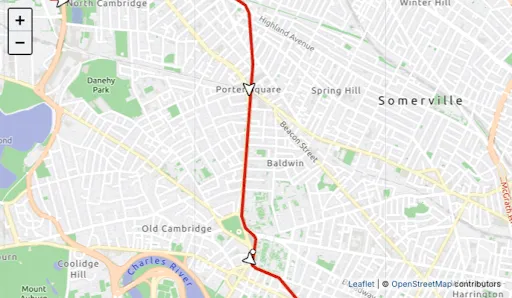
Why the T Takes That Weird Bend at Harvard (Yep, Politics)
If you’ve ever ridden the Red Line through Cambridge, you’ve probably noticed the strange dogleg between Harvard and Porter Square — that abrupt curve that makes your coffee slosh. It’s not a glitch in Boston’s famously odd street grid; it’s Harvard’s doing.
When the MBTA (then the Boston Elevated Railway) began extending the Red Line in the 1910s, engineers planned to run the tunnel directly beneath Harvard Yard — the most direct route north. But the University balked. The administration feared vibrations from trains could damage historic buildings and disrupt classroom lectures.
So, after years of wrangling and campus protests, the T literally bent around Harvard. The new tunnel alignment swung west beneath Massachusetts Avenue and Brattle Street, creating the zigzag curve we still ride today. It added distance, construction cost, and long-term maintenance headaches — but it kept the Yard untouched.
For rail historians, it’s a perfect example of how local power reshapes infrastructure. Harvard protected its turf; commuters have been making the bend ever since. The decision also influenced later T planning: the MBTA’s 1970s Alewife extension had to account for that inherited kink, locking the line’s geometry for another century.
And that’s what many would lead you to believe.
And they’d be wrong.
Sure, the government attempted to enforce Eminent Domain and Harvard, not to be outdone, countered with a letter from George Washington stating that they owned the land all the way down to the bedrock.
Check Mate.
Every time the train squeals through Harvard station, you’re hearing an echo of town-gown politics from more than 100 years ago — a literal curve in history.
🎥 Watch the original Short:

